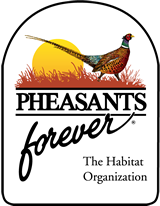No more striking decline in habitat quality for pheasants exists in Colorado than the decline in quality and quantity of wheat stubble. During a Division research study conducted in the mid 1960’s, wheat stubble and weed canopy in the core pheasant range of eastern Colorado averaged nearly 20 inches tall. Similar studies conducted in the mid 1990’s resulted in averages of only 8-10 inches tall, and that today’s best quality stubble was equivalent to the average in 1960’s era wheat stubble. The importance of this decline is not always obvious or intuitive with regards to region-wide pheasant populations, most of which depend on wheat stubble. Pheasants, originally being grassland birds, have adapted to using green wheat and wheat stubble as an alternate habitat in Colorado. Needless to say, whether nesting in green wheat in the spring or night-roosting in wheat stubble in the winter, both wheat and stubble play a critical role in pheasant population dynamics. In the 1990’s, the Division also compared survival rates of pheasants in different qualities of stubble. Results were not surprising, with pheasants in tall weedy wheat stubble showing much higher winter survival than birds in ‘average’ or ‘below average’ wheat stubble complexes. As a result, in 2001 a practice was created in PHIP that allowed chapters to provide a $5/acre incentive to farmers to leave wheat stubble tall and unsprayed after harvest.










